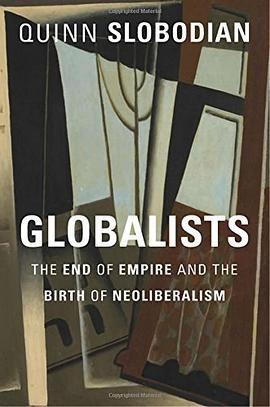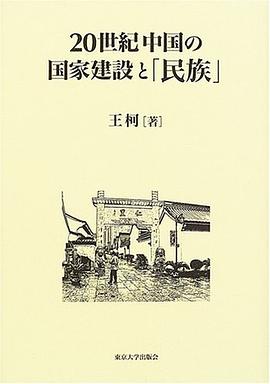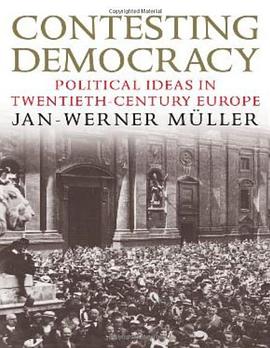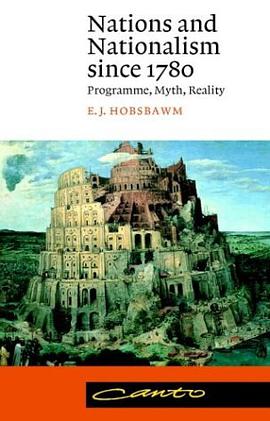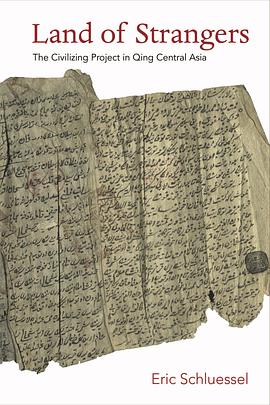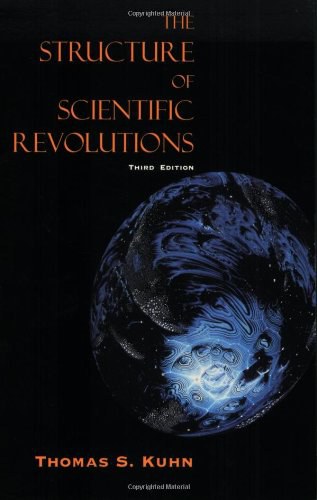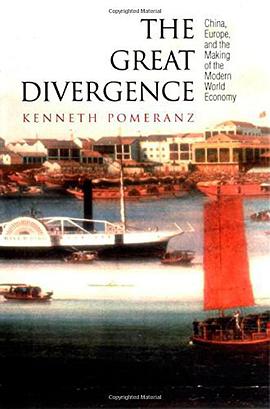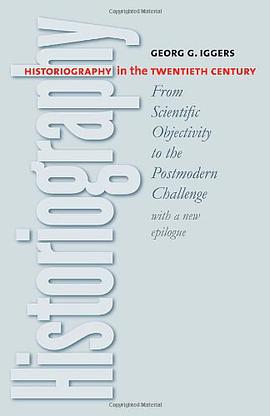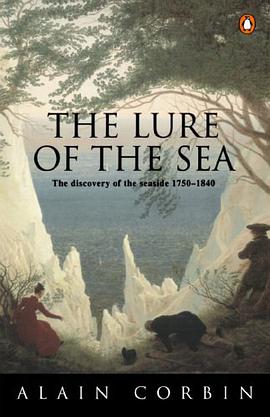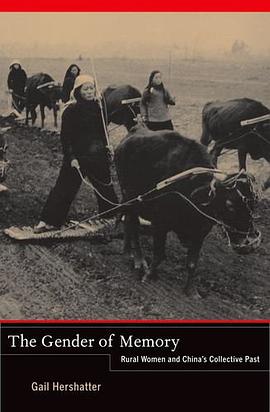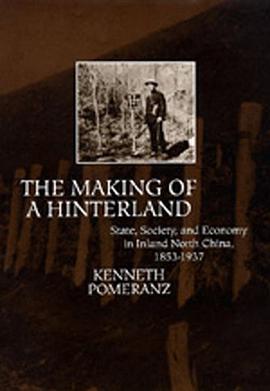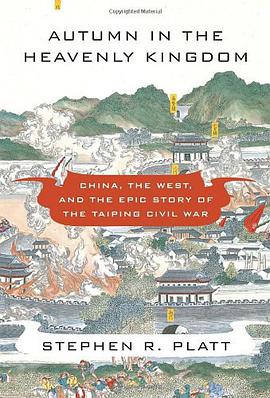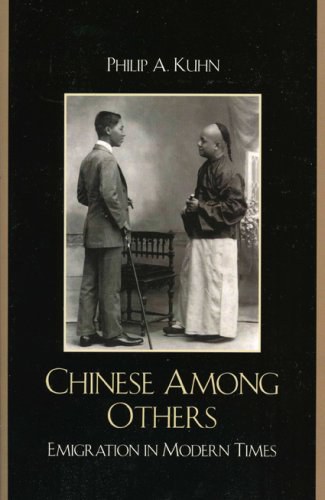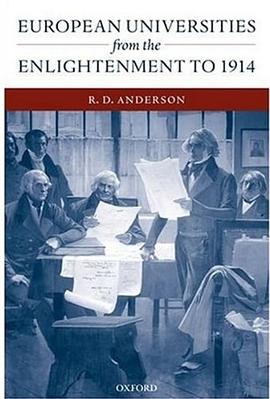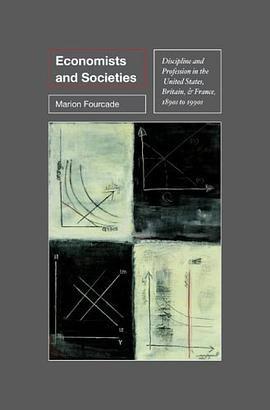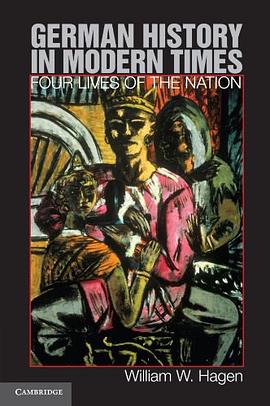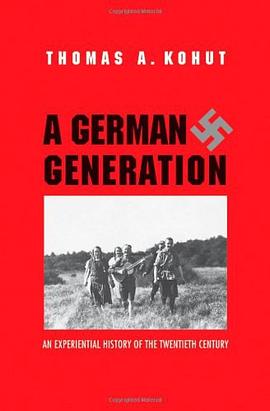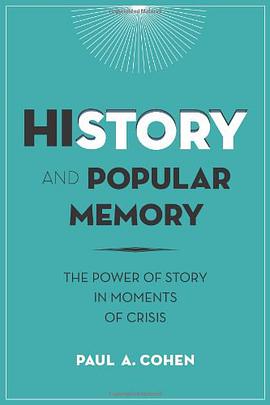历史
Globalists 豆瓣 Goodreads
作者:
Quinn Slobodian
Harvard University Press
2018
- 3
其它标题:
Globalists: The End of Empire and the Birth of Neoliberalism
Chosen by Pankaj Mishra as one of the Best Books of the Summer
Neoliberals hate the state. Or do they? In the first intellectual history of neoliberal globalism, Quinn Slobodian follows a group of thinkers from the ashes of the Habsburg Empire to the creation of the World Trade Organization to show that neoliberalism emerged less to shrink government and abolish regulations than to redeploy them at a global level.
Slobodian begins in Austria in the 1920s. Empires were dissolving and nationalism, socialism, and democratic self-determination threatened the stability of the global capitalist system. In response, Austrian intellectuals called for a new way of organizing the world. But they and their successors in academia and government, from such famous economists as Friedrich Hayek and Ludwig von Mises to influential but lesser-known figures such as Wilhelm Roepke and Michael Heilperin, did not propose a regime of laissez-faire. Rather they used states and global institutions-the League of Nations, the European Court of Justice, the World Trade Organization, and international investment law-to insulate the markets against sovereign states, political change, and turbulent democratic demands for greater equality and social justice.
Far from discarding the regulatory state, neoliberals wanted to harness it to their grand project of protecting capitalism on a global scale. It was a project, Slobodian shows, that changed the world, but that was also undermined time and again by the inequality, relentless change, and social injustice that accompanied it.
Neoliberals hate the state. Or do they? In the first intellectual history of neoliberal globalism, Quinn Slobodian follows a group of thinkers from the ashes of the Habsburg Empire to the creation of the World Trade Organization to show that neoliberalism emerged less to shrink government and abolish regulations than to redeploy them at a global level.
Slobodian begins in Austria in the 1920s. Empires were dissolving and nationalism, socialism, and democratic self-determination threatened the stability of the global capitalist system. In response, Austrian intellectuals called for a new way of organizing the world. But they and their successors in academia and government, from such famous economists as Friedrich Hayek and Ludwig von Mises to influential but lesser-known figures such as Wilhelm Roepke and Michael Heilperin, did not propose a regime of laissez-faire. Rather they used states and global institutions-the League of Nations, the European Court of Justice, the World Trade Organization, and international investment law-to insulate the markets against sovereign states, political change, and turbulent democratic demands for greater equality and social justice.
Far from discarding the regulatory state, neoliberals wanted to harness it to their grand project of protecting capitalism on a global scale. It was a project, Slobodian shows, that changed the world, but that was also undermined time and again by the inequality, relentless change, and social injustice that accompanied it.
20世紀中国の国家建設と「民族」 豆瓣
作者:
王 柯
東京大学出版会
2006
- 6
Contesting Democracy 豆瓣
作者:
Jan-Werner Müller
Yale University Press
2011
- 9
This book is the first major account of political thought in twentieth-century Europe, both West and East, to appear since the end of the Cold War. Skillfully blending intellectual, political, and cultural history, Jan-Werner Müller elucidates the ideas that shaped the period of ideological extremes before 1945 and the liberalization of West European politics after the Second World War. He also offers vivid portraits of famous as well as unjustly forgotten political thinkers and the movements and institutions they inspired.
Müller pays particular attention to ideas advanced to justify fascism and how they relate to the special kind of liberal democracy that was created in postwar Western Europe. He also explains the impact of the 1960s and neoliberalism, ending with a critical assessment of today's self-consciously post-ideological age.
Müller pays particular attention to ideas advanced to justify fascism and how they relate to the special kind of liberal democracy that was created in postwar Western Europe. He also explains the impact of the 1960s and neoliberalism, ending with a critical assessment of today's self-consciously post-ideological age.
Reckonings 豆瓣
作者:
Mary Fulbrook
Oxford University Press
2018
- 10
A single word--"Auschwitz"--is sometimes used to encapsulate the totality of persecution and suffering involved in what we call the Holocaust. Yet focusing on a single concentration camp, however horrific the scale of crimes committed there, leaves an incomplete story, truncates a complex history and obscures the continuing legacies of Nazi crimes.
Mary Fulbrook's encompassing book explores the lives of individuals across a full spectrum of suffering and guilt, each one capturing one small part of the greater story. Using "reckoning" in the widest possible sense to evoke how the consequences of violence have expanded almost infinitely through time, from early brutality through programs to euthanize the sick and infirm in the 1930s to the full functioning of the death camps in the early 1940s, and across the post-war decades of selective confrontation with perpetrators and ever-expanding commemoration of victims, Fulbrook exposes the disjuncture between official myths about "dealing with the past" and the extent to which the vast majority of Nazi perpetrators evaded responsibility. In the successor states to the Third Reich -- East Germany, West Germany, and Austria -- prosecution varied widely. Communist East Germany pursued Nazi criminals and handed down severe sentences; West Germany, caught between facing up to the past and seeking to draw a line under it, tended toward selective justice and reintegration of former Nazis; and Austria made nearly no reckoning at all until the mid-1980s, when news broke about Austrian presidential candidate Kurt Waldheim's past. The continuing battle with the legacies of Nazism in the private sphere was often at odds with public remembrance and memorials.
Following the various phases of trials and testimonies, from those immediately after the war to those that stretched into the decades following, Reckonings illuminates shifting public attitudes toward both perpetrators and survivors, and recalibrates anew the scales of justice.
Mary Fulbrook's encompassing book explores the lives of individuals across a full spectrum of suffering and guilt, each one capturing one small part of the greater story. Using "reckoning" in the widest possible sense to evoke how the consequences of violence have expanded almost infinitely through time, from early brutality through programs to euthanize the sick and infirm in the 1930s to the full functioning of the death camps in the early 1940s, and across the post-war decades of selective confrontation with perpetrators and ever-expanding commemoration of victims, Fulbrook exposes the disjuncture between official myths about "dealing with the past" and the extent to which the vast majority of Nazi perpetrators evaded responsibility. In the successor states to the Third Reich -- East Germany, West Germany, and Austria -- prosecution varied widely. Communist East Germany pursued Nazi criminals and handed down severe sentences; West Germany, caught between facing up to the past and seeking to draw a line under it, tended toward selective justice and reintegration of former Nazis; and Austria made nearly no reckoning at all until the mid-1980s, when news broke about Austrian presidential candidate Kurt Waldheim's past. The continuing battle with the legacies of Nazism in the private sphere was often at odds with public remembrance and memorials.
Following the various phases of trials and testimonies, from those immediately after the war to those that stretched into the decades following, Reckonings illuminates shifting public attitudes toward both perpetrators and survivors, and recalibrates anew the scales of justice.
Nations and Nationalism since 1780 豆瓣
作者:
E. J. Hobsbawm
Cambridge University Press
1992
- 10
Eric Hobsbawm's brilliant enquiry into the question of nationalism won further acclaim for his 'colossal stature ... his incontrovertible excellence as an historian, and his authoritative and highly readable prose'. Recent events in Eastern Europe and the former Soviet republics have since reinforced the central importance of nationalism in the history of political evolution and upheaval. This second edition has been updated in the light of those events, with a final chapter addressing the impact of the dramatic changes that have taken place. It also includes additional maps to illustrate nationalities, languages and political divisions across Europe in the nineteenth and twentieth centuries.
Land of Strangers 豆瓣
作者:
Eric Schluessel
2020
The Structure of Scientific Revolutions 豆瓣 Goodreads Goodreads
The Structure of Scientific Revolutions
8.9 (7 个评分)
作者:
Thomas S. Kuhn
University Of Chicago Press
1996
- 4
Since the publication of this book in 1962, Kuhn's writings (and many of his ideas, such as "paradigm shift") have been highly influential in academic and popular discourse. This book is must-reading for anyone studying the history and philosophy of science specifically, or cultural or technological change generally.
Since Kuhn does not permit truth to be a criterion of scientific theories, he would presumably not claim his own theory to be true. But if causing a revolution is the hallmark of a superior paradigm, The Structure of Scientific Revolutions has been a resounding success.
Since Kuhn does not permit truth to be a criterion of scientific theories, he would presumably not claim his own theory to be true. But if causing a revolution is the hallmark of a superior paradigm, The Structure of Scientific Revolutions has been a resounding success.
The Great Divergence 豆瓣 Goodreads
作者:
Kenneth Pomeranz
Princeton University Press
2001
- 12
The Great Divergence brings new insight to one of the classic questions of history: Why did sustained industrial growth begin in Northwest Europe, despite surprising similarities between advanced areas of Europe and East Asia? As Ken Pomeranz shows, as recently as 1750, parallels between these two parts of the world were very high in life expectancy, consumption, product and factor markets, and the strategies of households. Perhaps most surprisingly, Pomeranz demonstrates that the Chinese and Japanese cores were no worse off ecologically than Western Europe. Core areas throughout the eighteenth-century Old World faced comparable local shortages of land-intensive products, shortages that were only partly resolved by trade.
Pomeranz argues that Europe's nineteenth-century divergence from the Old World owes much to the fortunate location of coal, which substituted for timber. This made Europe's failure to use its land intensively much less of a problem, while allowing growth in energy-intensive industries. Another crucial difference that he notes has to do with trade. Fortuitous global conjunctures made the Americas a greater source of needed primary products for Europe than any Asian periphery. This allowed Northwest Europe to grow dramatically in population, specialize further in manufactures, and remove labor from the land, using increased imports rather than maximizing yields. Together, coal and the New World allowed Europe to grow along resource-intensive, labor-saving paths.
Meanwhile, Asia hit a cul-de-sac. Although the East Asian hinterlands boomed after 1750, both in population and in manufacturing, this growth prevented these peripheral regions from exporting vital resources to the cloth-producing Yangzi Delta. As a result, growth in the core of East Asia's economy essentially stopped, and what growth did exist was forced along labor-intensive, resource-saving paths--paths Europe could have been forced down, too, had it not been for favorable resource stocks from underground and overseas.
Pomeranz argues that Europe's nineteenth-century divergence from the Old World owes much to the fortunate location of coal, which substituted for timber. This made Europe's failure to use its land intensively much less of a problem, while allowing growth in energy-intensive industries. Another crucial difference that he notes has to do with trade. Fortuitous global conjunctures made the Americas a greater source of needed primary products for Europe than any Asian periphery. This allowed Northwest Europe to grow dramatically in population, specialize further in manufactures, and remove labor from the land, using increased imports rather than maximizing yields. Together, coal and the New World allowed Europe to grow along resource-intensive, labor-saving paths.
Meanwhile, Asia hit a cul-de-sac. Although the East Asian hinterlands boomed after 1750, both in population and in manufacturing, this growth prevented these peripheral regions from exporting vital resources to the cloth-producing Yangzi Delta. As a result, growth in the core of East Asia's economy essentially stopped, and what growth did exist was forced along labor-intensive, resource-saving paths--paths Europe could have been forced down, too, had it not been for favorable resource stocks from underground and overseas.
Historiography in the Twentieth Century 豆瓣
作者:
Georg G. Iggers
Wesleyan
2005
- 2
Product Description
In this book, now published in 10 languages, a preeminent intellectual historian examines the profound changes in ideas about the nature of history and historiography. Georg G. Iggers fraces the basic assumptions upon which historical research and writing have been based, and describes how the newly emerging social sciences transformed historiography following World War II. The discipline's greatest challenge may have come in the last two decades, when postmodern ideas forced a reevaluation of the relationship of historians to their subject and questioned the very possibility of objective history. Iggers sees the contemporary discipline as a hybrid, moving away from a classical, macrohistorical approach toward microhistory, cultural history, and the history of everyday life. The new epilogue, by the author, examines the movement away from postmodernism towards new social science approaches that give greater attention to cultural factors and to the problems of globalization.
In this book, now published in 10 languages, a preeminent intellectual historian examines the profound changes in ideas about the nature of history and historiography. Georg G. Iggers fraces the basic assumptions upon which historical research and writing have been based, and describes how the newly emerging social sciences transformed historiography following World War II. The discipline's greatest challenge may have come in the last two decades, when postmodern ideas forced a reevaluation of the relationship of historians to their subject and questioned the very possibility of objective history. Iggers sees the contemporary discipline as a hybrid, moving away from a classical, macrohistorical approach toward microhistory, cultural history, and the history of everyday life. The new epilogue, by the author, examines the movement away from postmodernism towards new social science approaches that give greater attention to cultural factors and to the problems of globalization.
The Lure of the Sea 豆瓣
Le territoire du vide : L'Occident et le désir du rivage (1750-1840)
作者:
Alain Corbin
译者:
Jocelyn Phelps
Penguin Books
1995
- 11
This is an account of how the pleasures of the seaside were discovered in the Western World. Based on the premiss that how we see the landscape over time is shaped not just by nature but also by the cultural baggage we bring to it, this book argues that with few exceptions, people living before the 18th century knew nothing of the attractions of the coast. The sea was perceived as sinister and unchanging, an unfathomable force inspiring horror, associated with floods, sea monsters and the like. With the Enlightenment, a change occurred. The book follows a course from a theocentric interpretation of the shore as the line drawn by God's finger after the Flood, through the sea as experienced by Neoclassical travellers on the Grand Tour, to the beloved sea of the Romantic poets and the growth of the popular seaside resort that came in their wake.
The Gender of Memory: Rural Women and China’s Collective Past 豆瓣 Goodreads
9.7 (7 个评分)
作者:
Gail Hershatter
University of California Press
2011
- 8
其它标题:
The Gender of Memory
What can we learn about the Chinese revolution by placing a doubly marginalized group―rural women―at the center of the inquiry? In this book, Gail Hershatter explores changes in the lives of seventy-two elderly women in rural Shaanxi province during the revolutionary decades of the 1950s and 1960s. Interweaving these women’s life histories with insightful analysis, Hershatter shows how Party-state policy became local and personal, and how it affected women’s agricultural work, domestic routines, activism, marriage, childbirth, and parenting―even their notions of virtue and respectability. The women narrate their pasts from the vantage point of the present and highlight their enduring virtues, important achievements, and most deeply harbored grievances. In showing what memories can tell us about gender as an axis of power, difference, and collectivity in 1950s rural China and the present, Hershatter powerfully examines the nature of socialism and how gender figured in its creation.
The Making of a Hinterland 豆瓣
作者:
Kenneth Pomeranz
University of California Press
1993
- 8
This wholly original reassessment of critical issues in modern Chinese history traces social, economic, and ecological change in inland North China during the late Qing dynasty and the Republic. Using many new sources, Kenneth Pomeranz argues that the development of certain regions entailed the systematic underdevelopment of other regions. He maps changes in local finance, farming, transportation, taxation, and popular protest, and analyzes the consequences for different classes, sub-regions, and genders.Pomeranz attributes these diverse developments to several causes: the growing but incomplete integration of North China into the world economy, the state's abandonment of many hinterland areas and traditional functions, and the effect of local social structures on these processes. He shows that hinterlands were made, not merely found, and were powerfully shaped by the strategies of local groups as well as outside forces. This wholly original reassessment of critical issues in modern Chinese history traces social, economic, and ecological change in inland North China during the late Qing dynasty and the Republic. Using many new sources, Kenneth Pomeranz argues that the development of certain regions entailed the systematic underdevelopment of other regions. He maps changes in local finance, farming, transportation, taxation, and popular protest, and analyzes the consequences for different classes, sub-regions, and genders.Pomeranz attributes these diverse developments to several causes: the growing but incomplete integration of North China into the world economy, the state's abandonment of many hinterland areas and traditional functions, and the effect of local social structures on these processes. He shows that hinterlands were made, not merely found, and were powerfully shaped by the strategies of local groups as well as outside forces.
Autumn in the Heavenly Kingdom 豆瓣
作者:
Stephen R. Platt
Knopf
2012
- 2
A gripping account of China’s nineteenth-century Taiping Rebellion, one of the largest civil wars in history. Autumn in the Heavenly Kingdom brims with unforgettable characters and vivid re-creations of massive and often gruesome battles—a sweeping yet intimate portrait of the conflict that shaped the fate of modern China.
The story begins in the early 1850s, the waning years of the Qing dynasty, when word spread of a major revolution brewing in the provinces, led by a failed civil servant who claimed to be the son of God and brother of Jesus. The Taiping rebels drew their power from the poor and the disenfranchised, unleashing the ethnic rage of millions of Chinese against their Manchu rulers. This homegrown movement seemed all but unstoppable until Britain and the United States stepped in and threw their support behind the Manchus: after years of massive carnage, all opposition to Qing rule was effectively snuffed out for generations. Stephen R. Platt recounts these events in spellbinding detail, building his story on two fascinating characters with opposing visions for China’s future: the conservative Confucian scholar Zeng Guofan, an accidental general who emerged as the most influential military strategist in China’s modern history; and Hong Rengan, a brilliant Taiping leader whose grand vision of building a modern, industrial, and pro-Western Chinese state ended in tragic failure.
This is an essential and enthralling history of the rise and fall of the movement that, a century and a half ago, might have launched China on an entirely different path into the modern world.
The story begins in the early 1850s, the waning years of the Qing dynasty, when word spread of a major revolution brewing in the provinces, led by a failed civil servant who claimed to be the son of God and brother of Jesus. The Taiping rebels drew their power from the poor and the disenfranchised, unleashing the ethnic rage of millions of Chinese against their Manchu rulers. This homegrown movement seemed all but unstoppable until Britain and the United States stepped in and threw their support behind the Manchus: after years of massive carnage, all opposition to Qing rule was effectively snuffed out for generations. Stephen R. Platt recounts these events in spellbinding detail, building his story on two fascinating characters with opposing visions for China’s future: the conservative Confucian scholar Zeng Guofan, an accidental general who emerged as the most influential military strategist in China’s modern history; and Hong Rengan, a brilliant Taiping leader whose grand vision of building a modern, industrial, and pro-Western Chinese state ended in tragic failure.
This is an essential and enthralling history of the rise and fall of the movement that, a century and a half ago, might have launched China on an entirely different path into the modern world.
Chinese Among Others 豆瓣
作者:
Philip A. Kuhn
Rowman & Littlefield Publishers
2008
- 3
In this book, distinguished historian Philip A. Kuhn tells the remarkable five-century story of Chinese emigration as an integral part of China's modern history. Although emigration has a much longer past, its "modern" phase dates from the sixteenth century, when European colonialists began to collaborate with Chinese emigrants to develop a worldwide trading system. The author explores both internal and external migration, complementary parts of a far-reaching process of adaptation that enabled Chinese families to deal with their changing social environments. Skills and institutions developed in the course of internal migration were creatively modified to serve the needs of emigrants in foreign lands.
As emigrants, Chinese inevitably found themselves "among others." The various human ecologies in which they lived have faced Chinese settlers with a diversity of challenges and opportunities in the colonial and postcolonial states of Southeast Asia, in the settler societies of the Americas and Australasia, and in Europe. Kuhn traces their experiences worldwide alongside those of the "others" among whom they settled: the colonial elites, indigenous peoples, and rival immigrant groups that have profited from their Chinese minorities but also have envied, feared, and sometimes persecuted them. A rich selection of primary sources allows these protagonists a personal voice to express their hopes, sorrows, and worldviews.
The post-Mao era offers emigrants new opportunities to leverage their expatriate status to do business with a Chinese nation eager for their investments, donations, and technologies. The resulting "new migration," the author argues, is but the latest phase of a centuries-old process by which Chinese have sought livelihoods away from home.
As emigrants, Chinese inevitably found themselves "among others." The various human ecologies in which they lived have faced Chinese settlers with a diversity of challenges and opportunities in the colonial and postcolonial states of Southeast Asia, in the settler societies of the Americas and Australasia, and in Europe. Kuhn traces their experiences worldwide alongside those of the "others" among whom they settled: the colonial elites, indigenous peoples, and rival immigrant groups that have profited from their Chinese minorities but also have envied, feared, and sometimes persecuted them. A rich selection of primary sources allows these protagonists a personal voice to express their hopes, sorrows, and worldviews.
The post-Mao era offers emigrants new opportunities to leverage their expatriate status to do business with a Chinese nation eager for their investments, donations, and technologies. The resulting "new migration," the author argues, is but the latest phase of a centuries-old process by which Chinese have sought livelihoods away from home.
European Universities from the Enlightenment to 1914 豆瓣
作者:
R. D. Anderson
Oxford University Press, USA
2004
- 10
Since the 1970s, the history of universities has become an important scholarly field, but there have been few attempts to bring this work to a wider audience. In European Universities from the Enlightenment to 1914, Robert Anderson provides an authoritative account of the development of European universities in the 'long' nineteenth century. The reforming rulers of the Enlightenment, the 'Humboldtian' model of the university developed in Germany, and Napoleon's institution of a centralized state system all contributed strands to a complex pattern which was reflected, in the age of nationalism, in distinctive national systems. While 'European' in their traditions, universities were also central to the formation of national elites and national consciousness. There are separate chapters on university systems in Germany, France, Britain (seen here as less of a special case than is often supposed), Italy and Spain, Russia, and the Habsburg Empire. These chapters are tied to more general themes which include the lasting significance of religious issues despite the progress of secularization, the involvement of professors and students in politics before and after 1848, the growth of the research ideal, and the development of the concept of academic freedom. There is a thorough discussion of the sociology of university attendance, and chapters of pioneering synthesis on women and universities and on student communities. Anderson's general argument is that the 'modern' university was consolidated in the 1870s and 1880s; by 1914 its ideals were under strain from academic specialization, the financial demands of scientific research, and the rise of virulent strains of nationalism and antisemitism - yet the liberal university retained its rationale and its vigour. This is no narrow study of educational history, but will appeal to all those with an interest in the political, social, and cultural history of the nineteenth and early twentieth centuries. It also has an extensive multilingual bibliography.
Economists and Societies 豆瓣
作者:
Marion Fourcade
Princeton University Press
2009
- 3
"Economists and Societies" is the first book to systematically compare the profession of economics in the United States, Britain, and France, and to explain why economics, far from being a uniform science, differs in important ways among these three countries. Drawing on in-depth interviews with economists, institutional analysis, and a wealth of scholarly evidence, Marion Fourcade traces the history of economics in each country from the late nineteenth century to the present, demonstrating how each political, cultural, and institutional context gave rise to a distinct professional and disciplinary configuration. She argues that because the substance of political life varied from country to country, people's experience and understanding of the economy, and their political and intellectual battles over it, crystallized in different ways - through scientific and mercantile professionalism in the United States, public-minded elitism in Britain, and statist divisions in France. Fourcade moves past old debates about the relationship between culture and institutions in the production of expert knowledge to show that scientific and practical claims over the economy in these three societies arose from different elites with different intellectual orientations, institutional entanglements, and social purposes. Much more than a history of the economics profession, "Economists and Societies" is a revealing exploration of American, French, and British society and culture as seen through the lens of their respective economic institutions and the distinctive character of their economic experts.
German History in Modern Times 豆瓣
作者:
William W. Hagen
Cambridge UP
2012
This history of German-speaking central Europe offers a very wide perspective, emphasizing a succession of many-layered communal identities. It highlights the interplay of individual, society, culture and political power, contrasting German with Western patterns. Rather than treating 'the Germans' as a collective whole whose national history amounts to a cumulative biography, the book presents the pre-modern era of the Holy Roman Empire; the nineteenth century; the 1914-1945 era of war, dictatorship and genocide; and the Cold War and post-Cold War eras since 1945 as successive worlds of German life, thought and mentality. This book's 'Germany' is polycentric and multicultural, including the multinational Austrian Habsburg Empire and the German Jews. Its approach to National Socialism offers a conceptually new understanding of the Holocaust. The book's numerous illustrations reveal German self-presentations and styles of life, which often contrast with Western ideas of Germany.
A German Generation 豆瓣
作者:
Thomas A. Kohut
Yale University Press
2012
- 1
Germans of the generation born just before the outbreak of World War I lived through a tumultuous and dramatic century. This book tells the story of their lives and, in so doing, offers a new history of twentieth-century Germany, as experienced and made by ordinary human beings. On the basis of sixty-two oral-history interviews, this book shows how this generation was shaped psychologically by a series of historically engendered losses over the course of the century. In response, this generation turned to the collective to repair the losses it had suffered, most fatefully to the community of the 'Volk' during the Third Reich, a racial collective to which this generation was passionately committed and which was at the heart of National Socialism and its popular appeal.
History and Popular Memory 豆瓣
作者:
Paul A Cohen
Columbia University Press
2014
- 4
When people experience a traumatic event, such as war or the threat of annihilation, they often turn to history for stories that promise a positive outcome to their suffering. During World War II, the French took comfort in the story of Joan of Arc and her heroic efforts to rid France of foreign occupation. To bring the Joan narrative more into line with current circumstances, popular retellings modified the original story so that what people believed took place in the past was often quite different from what actually occurred.
Paul A. Cohen believes this interplay between story and history is a worldwide phenomenon found in countries of radically different cultural, religious, and social character. He focuses on Serbia, Israel, the Soviet Union, China, Great Britain, and France, all of which experienced severe crises in the twentieth century and, in response, appropriated age-old historical narratives that resonated with what was happening in the present to serve a unifying, restorative purpose.
A central theme in the book is the distinction between popular memory and history. Although vitally important to historians, this distinction is routinely blurred in people's minds, and the historian's truth often cannot compete with the power of a compelling story from the past, even when it has been seriously distorted by myth or political manipulation. Cohen concludes by suggesting that the patterns of interaction he probes, given their near universality, may well be rooted in certain human propensities that transcend cultural difference.
Paul A. Cohen believes this interplay between story and history is a worldwide phenomenon found in countries of radically different cultural, religious, and social character. He focuses on Serbia, Israel, the Soviet Union, China, Great Britain, and France, all of which experienced severe crises in the twentieth century and, in response, appropriated age-old historical narratives that resonated with what was happening in the present to serve a unifying, restorative purpose.
A central theme in the book is the distinction between popular memory and history. Although vitally important to historians, this distinction is routinely blurred in people's minds, and the historian's truth often cannot compete with the power of a compelling story from the past, even when it has been seriously distorted by myth or political manipulation. Cohen concludes by suggesting that the patterns of interaction he probes, given their near universality, may well be rooted in certain human propensities that transcend cultural difference.

